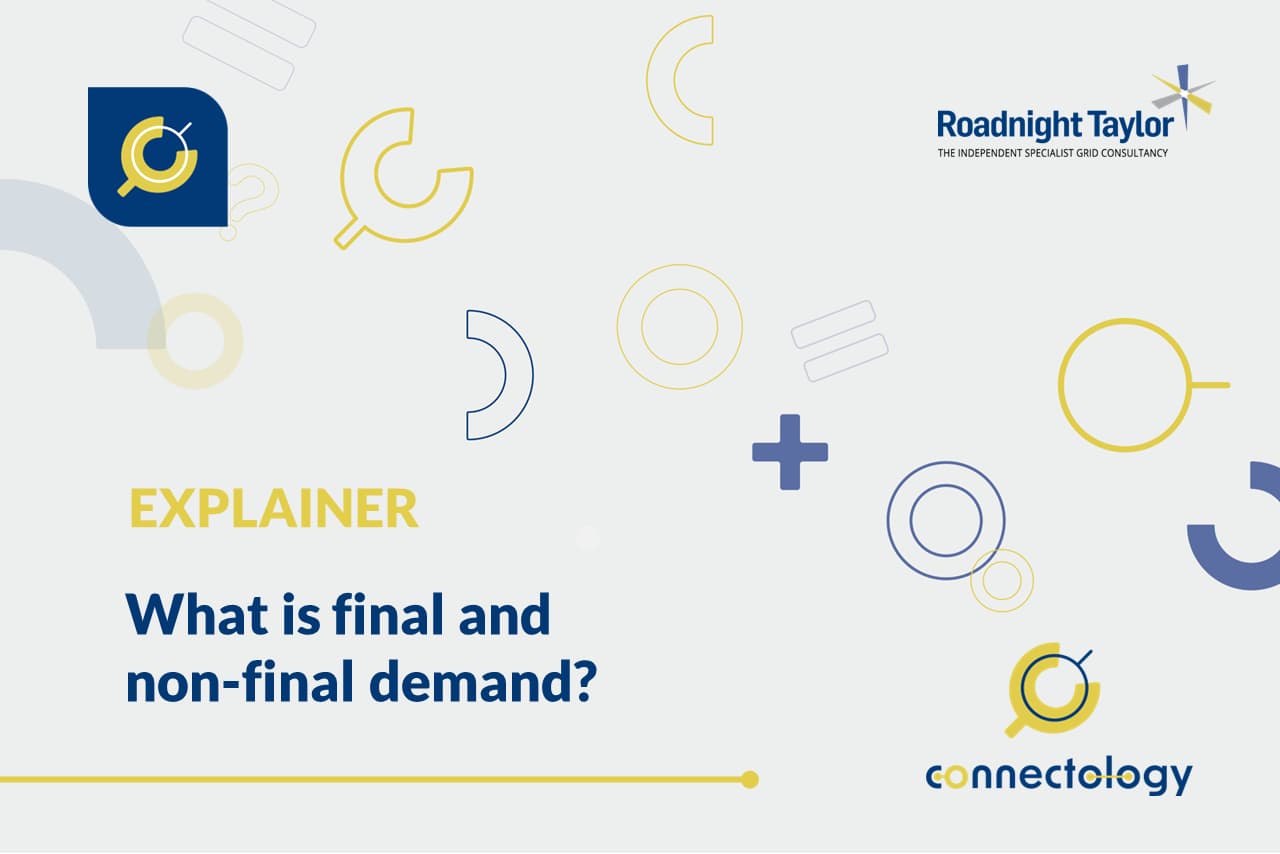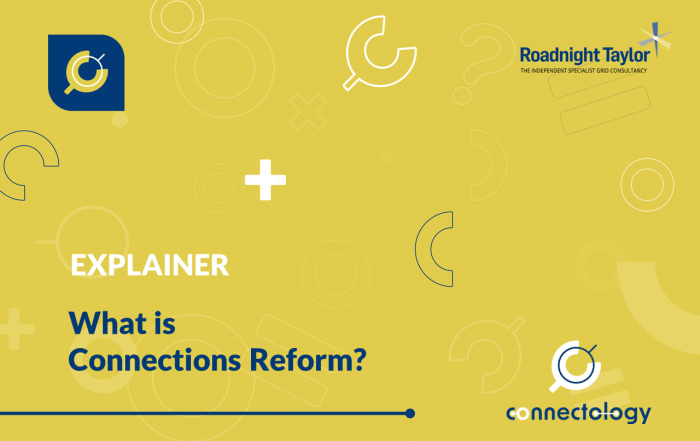What is final and non-final demand?
Recent changes to charging rules make it essential to define when demand is ‘final’, as in used onsite, and what is ‘non-final’ and due to be exported back into the network. Here we explore why and the differences in more detail.
Article by Nikki Pillinger – expert grid connections project manager
Before joining Roadnight Taylor Nikki, headed grid teams at GRIDSERVE and British Solar Renewables where she managed the origination, de-risking, project management and energisation of a large number of grid connections. Nikki has also led the grid oversight in a significant volume of both project acquisitions and project sales.
12 April 2023

For decades, anything connected to the electricity grid that wasn’t a generator was a demand, a consumer of electricity. In the last five years, the rise of grid-scale electricity storage has given a headache to network companies and regulators. Electricity storage systems – the most common form of which are batteries – charge (take power and energy from the grid) and discharge (push power and energy back into the grid). They can therefore look like both a demand and a generator.
Why do we need a final and non-final demand definition?
Recent changes to charging rules (under Ofgem’s Significant Code Review) mean that demand projects will, on the whole, no longer pay for network infrastructure reinforcement (although speculative demand connections will still pay towards reinforcement), whereas generation schemes will still pay a contribution towards reinforcement. Therefore, it was essential to properly define when demand was ‘final’, as in used onsite, and what was ‘non-final’ and due to be exported back into the network.
What is final demand?
Final demand is defined as “electricity which is consumed other than for the purposes of generation or export onto the electricity network”. There must be metered import consumption on site. This covers homes, schools, hospitals, businesses and other commercial properties. It also includes hydrogen electrolysers.
Users that solely provide reactive power services for voltage support should not be captured within the ‘final demand’ definition.
What is non-final demand?
Non final-demand sites are single sites that use the energy imported from the network for the purposes of further energy generation. These can be commissioning, operating, maintaining or decommissioning. Battery or electricity storage facilities are classed as non-final demand, as the electricity that they import is only temporarily stored, and is used to export energy into the network at certain times.
What happens with mixed use sites?
The current Ofgem SCR decision document states that sites will be categorised as ‘final demand’ if they have any amount of final demand on them. This could lead to inaccurate definitions of sites that are predominantly made up of generation and there are currently conversations around how this should be addressed. The most likely is that sites will be defined as either generation or final-demand depending on which is larger, the final-demand or the generation. This could potentially give opportunities for large-scale hydrogen electrolysis developers looking to put generation on site, to have the entire site classed as final-demand and be charged under the more lenient demand rules.
Contact us
Roadnight Taylor can help clients understand whether their sites are final demand or generation, and which charging rules will apply, in order to minimise costs and risks for their connections.
To find out more call us on 01993 830571 or send us a message via our contact form.






